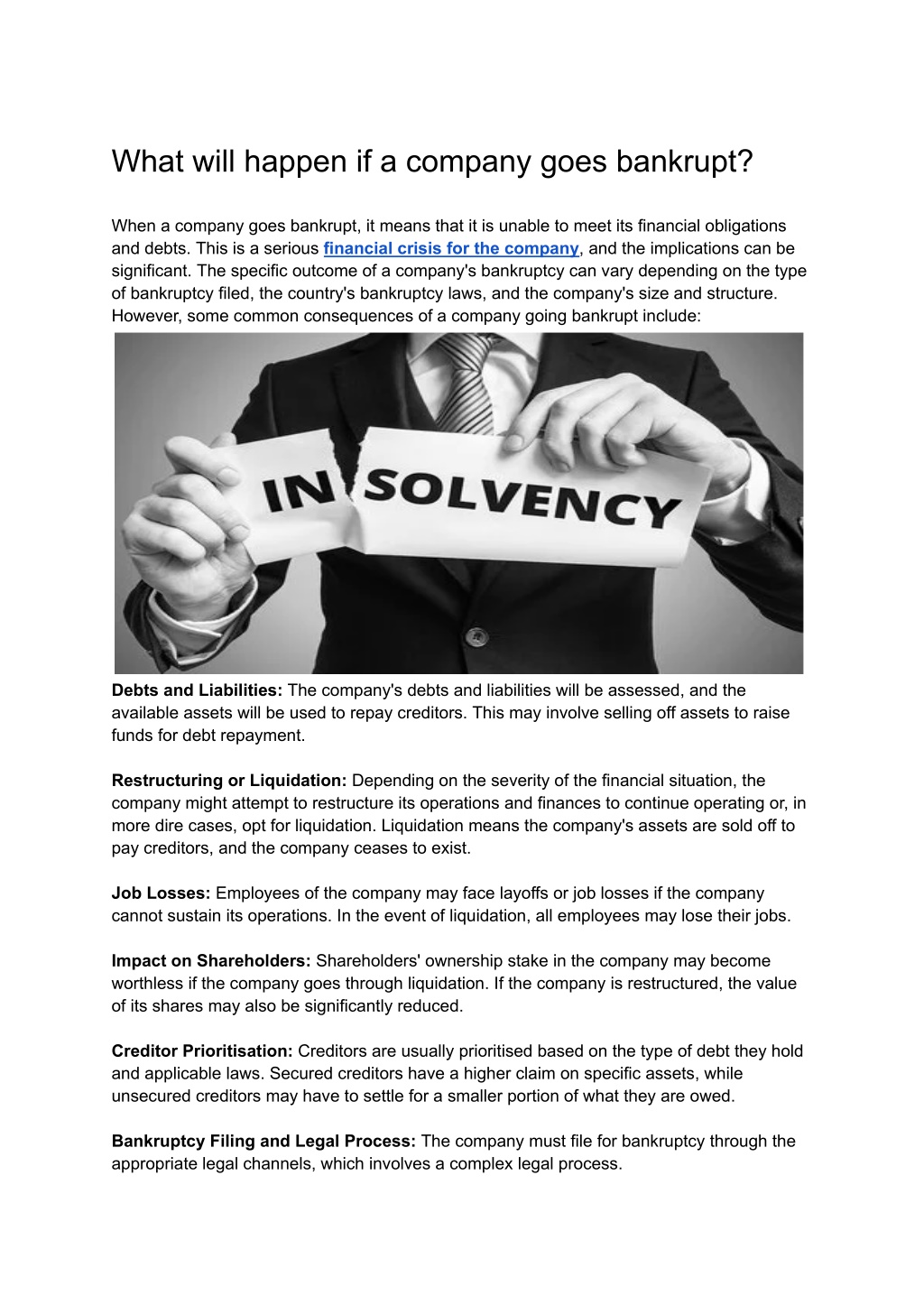Debunking Company Administration in the UK: Results on Employees Throughout Liquidation
Debunking Company Administration in the UK: Results on Employees Throughout Liquidation
Blog Article
Exploring the Effect of an Organization Going Into Management
When a company goes into management, the effects cascade past its instant boundaries, sending surges through different spheres. As we browse with the complex landscape of a business encountering management, a deeper understanding of its effects emerges, shedding light on the intricacies that unfold when the destiny of an enterprise hangs in the equilibrium.
Immediate Effect on Operations
When an organization enters into administration, the immediate influence on its operations can be substantial, influencing numerous elements of its operating. Among the key consequences is the disruption in everyday activities. With unpredictability surrounding the future of the firm, staff members may experience distress, leading to reduced productivity and inspiration. Partners and distributors might end up being reluctant to involve with the company, influencing the supply chain and potentially creating delays or scarcities in important sources.
Monetarily, the firm may face restrictions on its costs and financial investment decisions, as administrators take control to examine the scenario and determine the most effective training course of action. This can lead to capital obstacles, making it hard to fulfill obligations such as paying wages or settling invoices without delay. Furthermore, the reputation of the business might endure, as news of administration spreads, possibly leading to a loss of consumer trust and loyalty.
Financial Implications for Stakeholders
The prompt functional obstacles encountered by a service going into management have significant economic ramifications for stakeholders associated with the business's affairs. Investors usually birth the impact of monetary losses, experiencing a decline in the value of their investments as the company's supply costs plummet. Staff members face uncertainties concerning their incomes, benefits, and job safety, with potential discharges or minimized compensation plans impending. Vendors may come across repayment delays or also non-payment for items or solutions provided, influencing their capital and overall security. Furthermore, creditors deal with the risk of getting just a fraction of the money owed to them, bring about prospective losses and affecting their very own financial health and wellness. On the other hand, clients may additionally be affected by an organization going into administration, encountering disruptions in solution, warranty concerns, or the loss of pre paid solutions or down payments. These economic ramifications highlight the causal sequence that a service entering administration can carry various stakeholders, highlighting the value of proactive danger management and calculated preparation.
Legal Commitments and Duties
Browsing the complex web of legal commitments and duties is a vital venture for all parties involved when a company goes into administration. The administrators appointed to manage the process have a duty to act in the very best rate of interests of the creditors. They have to adhere to legal needs, such as preparing reports on the firm's monetary scenario and carrying out meetings with lenders to discuss the administration procedure.
Staff members likewise have lawful rights that need to be upheld during administration. Depending upon the scenarios, they might be entitled to redundancy pay, notification pay, and other advantages. It is important blog here for managers to adhere to employment regulations and guarantee that staff members are treated fairly throughout the process.
Creditors play a significant role in management. They have the right to be educated concerning the company's financial condition, go to lenders' meetings, and ballot on important decisions. Administrators must connect transparently with lenders and stick to lawful methods to guard their rate of interests.
Potential for Company Restructuring
In the realm of company management, discovering the potential for reorganizing holds substantial assurance for renewing resource a battling company. When a business faces economic distress or operational obstacles, reorganizing uses a critical method to address underlying issues and position the business for future success. By reflecting on the organizational structure, operational procedures, and financial strategies, an organization can apply modifications that boost performance, lower prices, and improve total performance.

Moreover, reorganizing gives an opportunity to assess leadership roles, responsibilities, and decision-making procedures to ensure effective governance and liability. By carrying out a well-balanced restructuring strategy, a company can browse tough times and arise more powerful and a lot more resilient in the open market landscape.

Implications for Industry and Market
Considering the wider ramifications for sector and market characteristics, it ends up being evident that a company going through restructuring can cause causal sequences that reverberate throughout the competitive landscape. When a company enters into administration, it can lead to boosted competitors as various other companies seek to fill up deep space left by the having a hard time service. This intense competitors can lead to rate battles, technology drives, or mergings and procurements as business jostle for market share.
Furthermore, the collapse of a service can likewise affect providers and partners within the industry. Distributors might deal with repayment delays and even defaults, influencing their own financial security (what happens to employees when a company goes into liquidation). Partnerships that were reliant on the now-struggling business may need to be reviewed or renegotiated, bring about more interruptions out there community
Conclusion
In verdict, the impact of an organization entering into administration is substantial, affecting procedures, financial resources, legal obligations, and potentially causing restructuring. Stakeholders should browse the difficulties and unpredictabilities that occur from this procedure, while the wider sector and market may also really feel the consequences. It is crucial for all celebrations involved to very carefully consider their next actions and plan for the future in order to alleviate potential losses and make sure the most effective result for all included.
When a service goes right into administration, the prompt impact on its operations can be significant, impacting numerous aspects of its working.The immediate operational obstacles encountered by a business going into management have substantial financial ramifications for stakeholders included in the firm's events. These here are the findings financial ramifications highlight the surge result that a company going into management can have on various stakeholders, highlighting the value of aggressive risk administration and critical planning.
When a company goes right into management, it can lead to enhanced competition as various other firms seek to fill the void left by the battling company - what happens to employees when a company goes into liquidation.In verdict, the effect of a company going into administration is considerable, impacting operations, finances, legal responsibilities, and potentially leading to restructuring
Report this page